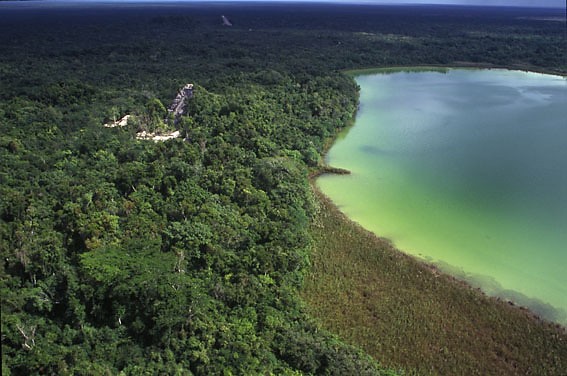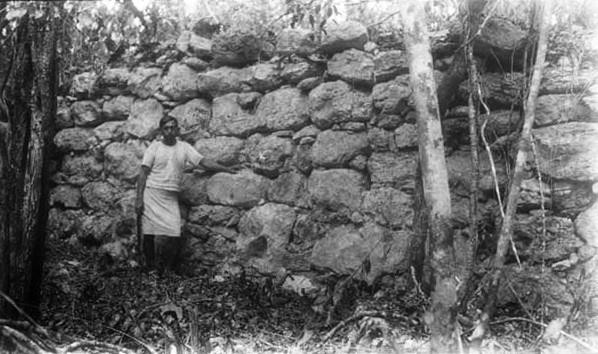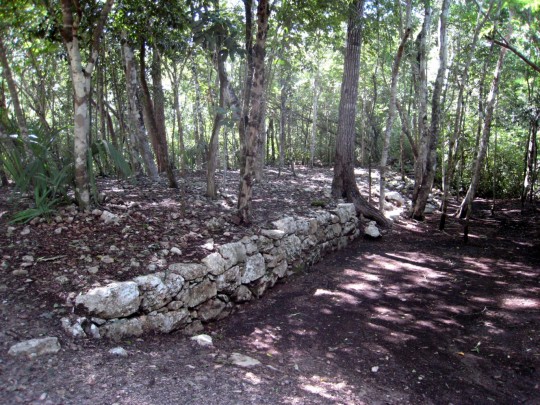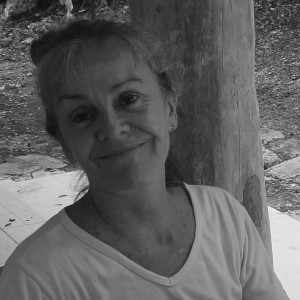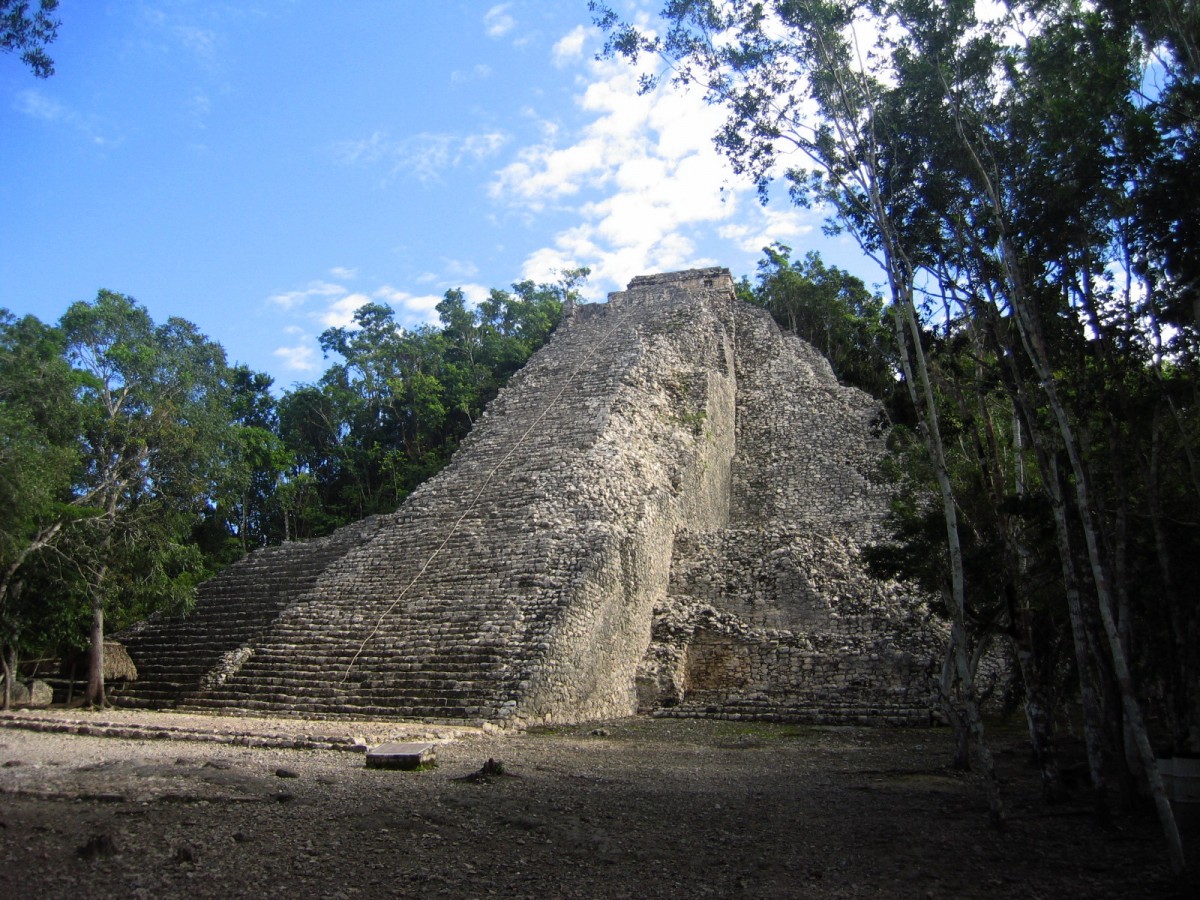When we visit the archeological site for an ancient settlement, we rarely stop to ask ourselves how many years it took to erect the imposing buildings or how many people took part in the process. We need to consider what was involved in terms of the social and religious control of the inhabitants, the physical labor, knowledge and specialization in engineering, mathematics, physics, architecture, and astronomy, not forgetting artistic skills.
In the case of Coba, it seems to have started with small villages around the lakes, which guaranteed a water supply in a region with scarce surface water, since this vital resource runs in subterranean rivers and only occasionally comes to the surface when the ubiquitous layer of limestone collapses.
The building of Coba was a complex and difficult task, considering just how uneven the ground was. The many changes in level challenged the stability of the buildings, so the first requirement was to level out the land on a very large scale in order to lay the foundations of the most important buildings. Thousands of workers were needed for this task: to quarry the stone, to cut it and shape it, to obtain the sascab (decomposed limestone), water bearers, selectors of stones for lime production and mortar makers. It sounds everyday and ordinary enough work, but we must remember that they only had stone tools, since they had no knowledge of metal, and nor did they have the wheel or pack animals. Everything had to be hauled on people's backs, sometimes over enormous distances. The masons who set the stones in place, those who prepared the lime, the plasterers, those who painted the walls red and those who prepared the paint, the women who prepared the food for the workers, the sculptors, the potters and the farmers and hunters who produced the food. We have to imagine all of this in a situation with extreme environmental conditions, where the soil for crops is very shallow and rapidly exhausted. New land needs to be found, but even here humans are constantly battling the vegetation which always grows up rapidly.
Let us examine the raised roads (sacbeob) as an example of the construction works at Coba. These have been categorized according to their length. There are local roads for communication within the city, then longer ones reaching what we might call the suburbs, in other words, the not too distant settlements between 1 and 4 miles away, and finally what are considered regional roads, since they link Coba with other distant regions, such as Yaxuna, which is over 60 miles away. Labor beyond the city of Coba's capacity was certainly needed to build the regional roads and this must have come from the regions which the roads served, which is an indicator of political control and regional hegemony. Building these roads was a challenging job since they crossed marshy land prone to flooding, which is why some sections needed to be raised to a considerable height above ground level. The roads were planned and routed in a highly efficient manner, with a gradient for water to run off and leveled with stucco to give a smooth surface, making it comfortable for walking long distances and making the transport of goods and people more efficient.
So when you visit an ancient city, look beyond the surfaces, use your powers of observation and imagination. Think and ask questions. We should not forget that we are looking at the results of a tremendous joint effort by men and women over hundreds of years, which cost blood, sweat and tears, and it is now our responsibility to look after and preserve what has been left.


